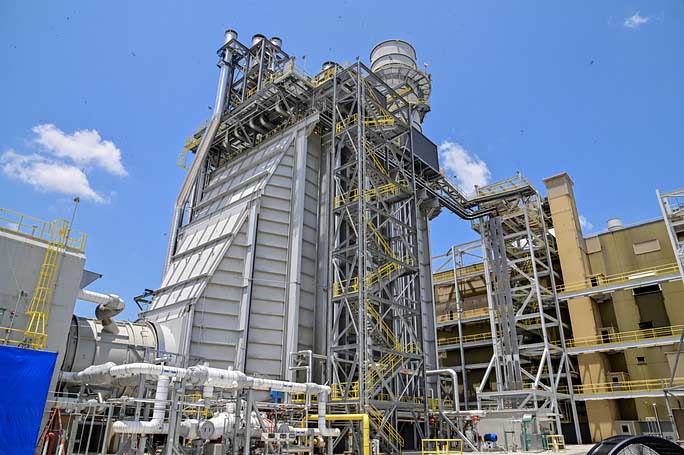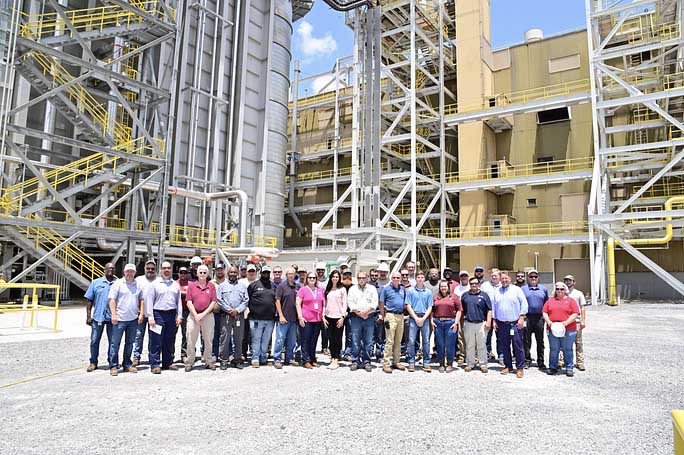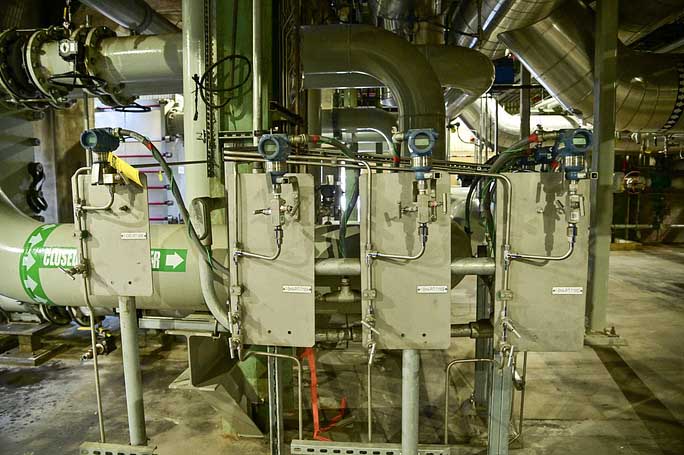
Cooperative Energy employees likely saw it coming for years: Increasingly longer idle periods that led to a shutdown in 2018 following the announcement of plans to decommission the R.D. Morrow Sr. Generating Station after 40 years of service.
“We had about 110 employees at Morrow for many of those years and still had 65 on the job when we committed to suspending coal operations,” said Jeff C. Bowman, president and CEO of the Hattiesburg, Mississippi-based generation and transmission cooperative.
Officials knew the surrounding communities needed those jobs, and the 448,000 members and businesses that depend on the co-op would still need reliable and affordable power.
“Cooperative Energy’s sole purpose is to serve our member cooperatives with affordable, reliable, and responsible energy, and we’re constantly looking for opportunities to improve,” said Mark Smith, the G&T’s senior vice president of power generation.
“Years of analyses concluded the best path forward was to repower our legacy coal plant into a 550-megawatt state-of-the-art combined cycle natural gas plant,” said Smith. “Plant Morrow is once again a symbol of affordable, reliable, and responsible generation for Mississippi and our members.”
Combined cycle technology uses waste heat from natural gas generation to make steam, which can increase overall electricity production by up to 50%.

At peak production, Morrow consumed about 1 million tons of coal per year and emitted around 3.5 million tons of carbon dioxide. The switch to natural gas is expected to reduce CO2 emissions by about 2 million tons per year compared to coal-based generation, said Trey Cannon, Cooperative Energy’s director of generation projects.
Morrow’s 400 megawatts of coal-based generation began serving southern Mississippi in 1978. When operations were suspended in 2018, workers turned their attention to environmental mitigation activities and dismantling dormant facilities at the more than 1,000-acre site.
“Our instrument and electrical group has done several major projects over the years, but the Morrow Repower Project was certainly the largest,” said Plant Morrow Instrument and Electrical Superintendent Larry Eaton.
In the demolition phase, co-op employees helped remove some 20 miles of cable and 500 conduit runs and dismantled and removed equipment that had not seen daylight outside the powerhouse since the 1970s. During construction, the team completed 47 work packages, following the same criteria as the contractors on-site, and played a key role in commissioning the unit.
“Retaining our existing workforce at the plant was of utmost importance. These men and women are the heart and soul of our operations,” said Smith. “They are committed, hardworking team members, and we wanted that same level of pride and dedication for the new Plant Morrow moving forward.”
Over the past four years, the co-op’s Morrow staff also completed about 19,000 hours of training to help them transition skills honed over years of coal-based operations to run the new plant— the largest training initiative ever undertaken by Cooperative Energy.

“The increase in employee confidence, knowledge and skill was immediately noticed with every hour of training completed and continues to prove invaluable with every megawatt produced,” said Hollis Douglas, the plant’s training coordinator.
Since commercial operations began in mid-March, the unit has run continuously, said Bowman. “If we are not the most efficient [generation] unit in the United States, we’re very close to the top.”
Bowman and other G&T officials stress that the success and savings achieved on the project stemmed from the commitments of their existing staff.
“The repower of our plant was a lifesaver for me,” said Shelby Lee, the plant’s mechanical maintenance foreman. “Every day we planned for what would be done tomorrow, next week or even next month.”
The G&T’s commitment to retain and retrain staff was reassuring to many who could not have easily commuted to any other G&T facility, particularly those with duties specific to coal-based generation.
“I just accepted the fact that I would have a career until the units were deemed unusable, and at that point, I would have to start over somewhere else with a different company to continue on to retirement,” said Lee, adding that the project has provided many employees with the confidence to make future plans.
“This was the best thing I could have hoped for,” said Lee. “We could all relax and continue to enjoy life without wondering each day if we were going to find out that our whole lives had to change because ‘daddy had to start a new job somewhere else.’”
Derrill Holly is a staff writer for NRECA.